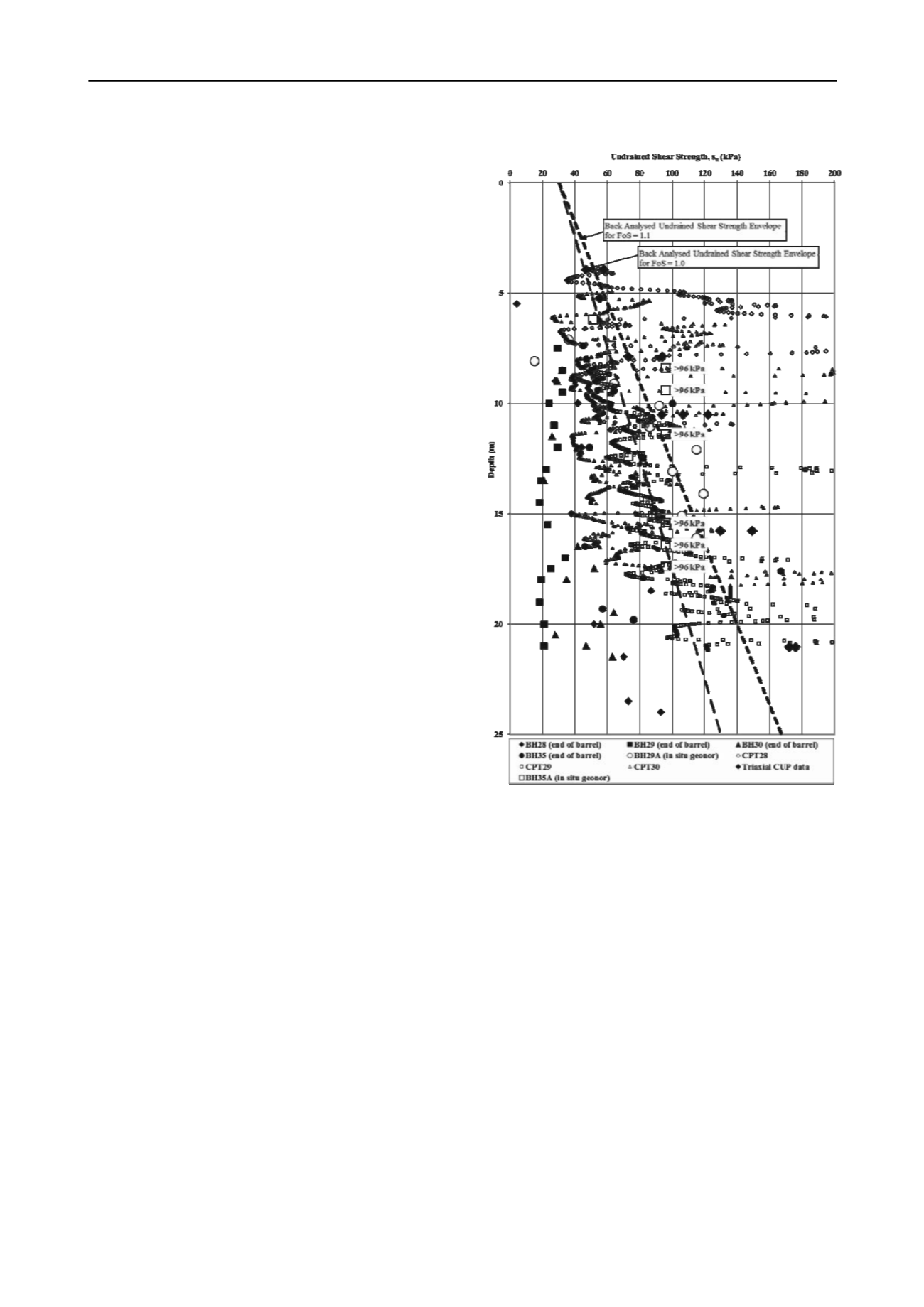
3046
Proceedings of the 18
th
International Conference on Soil Mechanics and Geotechnical Engineering, Paris 2013
ponds. When tipped into the landfill, the sludge exhibits a
degree of run-out (approximately 30 to 80m), but drains and
desiccates relatively quickly.
3.2
Operation of Landfill Cells
The landfills are formed in a series of cells. Each cell is
constructed by first constructing a containment bund of the high
strength granular RPCC waste and then placing the sludge
material behind it. After a sludge depth of 2.4m is achieved
within the cell, the sludge is allowed to dry and desiccate for
periods of 8 to 12 weeks. The next “lift” of the cell is then
carried out by constructing another 2.4m high bund of RPCC on
top of the previous one, and continuing the filling process with
sludge in the same way as before. Because each new bund is
half on the old bund and half on the sludge, the overall crest of
the cell tends to move generally up the valley and is commonly
termed “upstream” construction.
3.3
In situ sludge characteristics
3.3.1
General
Once the sludge has been deposited into the landfill, it gains
strength relatively quickly. The surfaces of the sludge cells
rarely pond rainwater and testing has shown the sludge mass
does drain and consolidate over time.
To investigate the nature of the sludge within the landfill,
boreholes and cone penetration tests (CPTs) were drilled
through three different completed cells. Locations were chosen
to represent the characteristics of both older and younger sludge
materials. A variety of tests were completed in situ and on tube
samples. The sludge was found to have the following typical
properties:
Bulk density: 1.4t/m
3
Undrained shear strength (after initial settling,
desiccation and consolidation): 30kPa and increasing
to greater than 100kPa at depth
Liquid limit (LL): 60% to 100%
Plasticity index (PI): 10 to 53
Effective angle of internal friction: 36° – 39°
3.3.2
Shear strength
The in situ undrained shear strength (s
u
) was assessed using
Geonor vane, hand-held vane, CPT and triaxial CUP tests and
short term stability back analyses. The resultant shear strength
data from all approaches is summarized in a single plot in
Figure 1. Discussion about each method follows.
Geonor Vane:
This is the most direct in situ test method and
is given the highest weighting. Results show a clear indication
of strength increase with depth.
Hand-held Vane:
Measurements were taken with a small
blade vane at the end of the open borehole barrel. Results show
significantly lower values than the Geonor vane and triaxial
CUP data and a generally slightly decreasing trend with depth.
Such trends indicate a strong influence of sample disturbance
and this data should therefore be disregarded.
Figure 1. Undrained shear strength of sludge material with depth
CPT:
A method of deriving the undrained shear strength
from CPT data is given by Lunne, Robertson & Powell (1997).
The data show a clear trend of increasing strength with depth
and also, by comparing the different test locations, a clear
indication of strength increase with the length of time the sludge
has been in place.
Triaxial Tests:
The consolidated undrained triaxial tests
with pore pressure measurement (CUP tests) give a measure of
undrained strength (s
u
) with consolidation pressure (p´) and also
a s
u
/p´ relationship. This relationship gives an indication of the
expected increase in strength with depth after full consolidation.
The CUP data depth plotted on Figure 1 is based on the
effective consolidation stress applied to the sample for each test,
to represent a comparable overburden stress.
Back analysis:
Based on historical annual survey data, the
maximum free-standing slope face height for an operating cell
was 24.5m with a slope of 1.2H: 1V. A back-analysis of this
maximum free standing slope has been carried out using
equilibrium software (Slope/W). An undrained shear strength
profile for the sludge material of 30kPa at the surface,
increasing at 4kPa per meter with depth is required for a safety
factor of unity. Similarly, an undrained shear strength profile
for the sludge material of 30kPa at the surface, increasing at
5.5kPa per meter with depth is required for a safety factor of
1.1.


